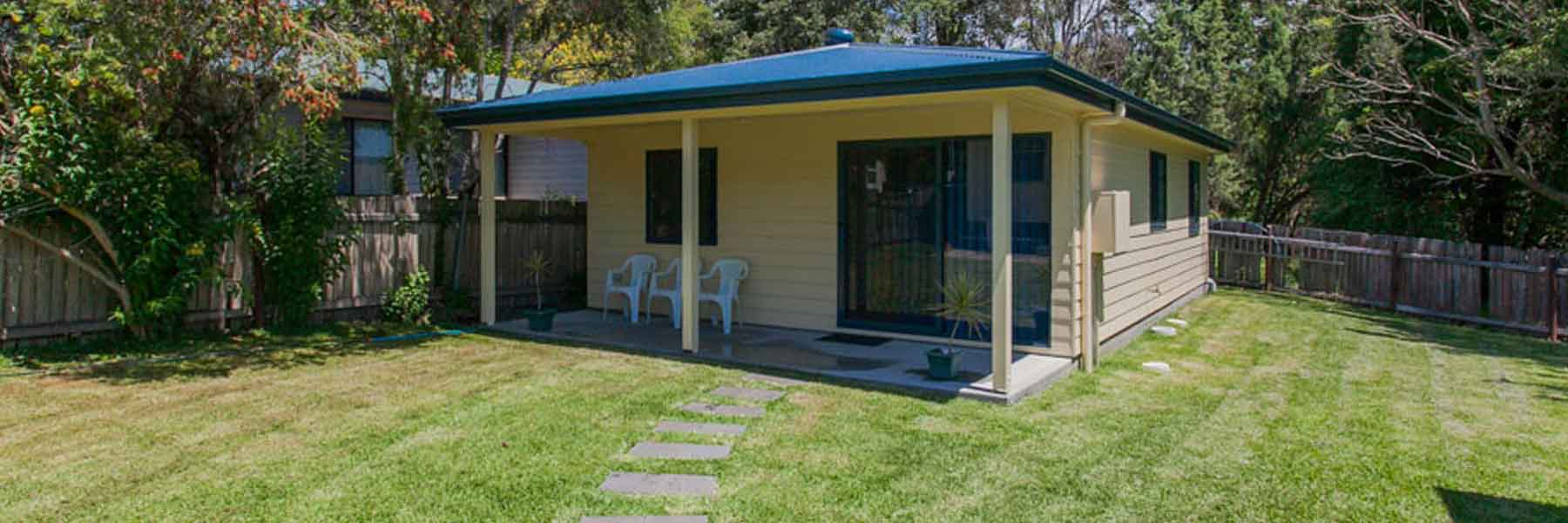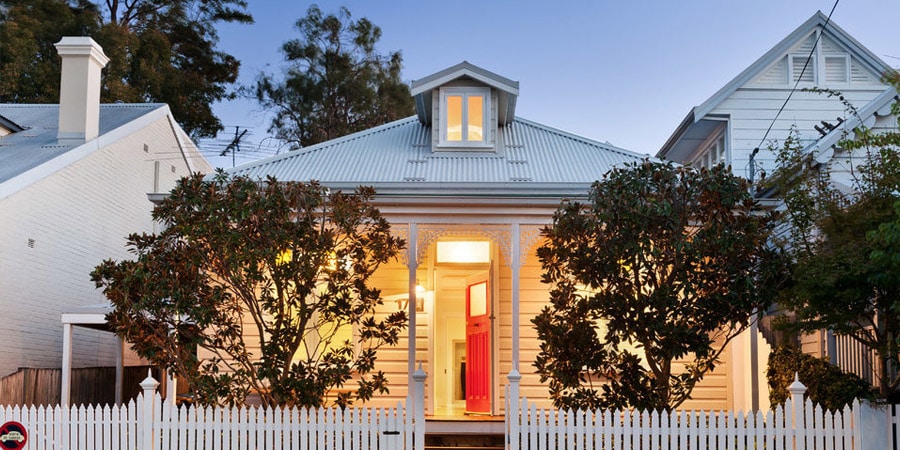Home > Home Loans > Buying Your Next Home
Buying Your Next Home
An in-depth look at your options for financing the purchase of your next home – with the help of Savvy.
Author
Savvy Editorial TeamFact checked
You’ve been through the home buying process before, so you already know the challenges involved in organising a home loan. Whether you’re thinking of upsizing, downsizing or investing, buying your next home will involve making difficult choices about the best home loan finance for the next stage of your property-owning journey. Find out more about second home purchases and how to organise financing for them, as well as comparing mortgage offers, with Savvy.
The options you have available depend on whether you’re intending to buy another home for investment purposes or whether you’re selling your existing home and want to buy another as your primary place of residence. Alternatively, you may be thinking of keeping your existing home as your investment property and buying another home to live in.
What are my options for a deposit when I’m buying my next home?
It’s worth considering how you’re going to come up with an acceptable deposit before considering what sort of finance you want for your next home. All lenders require a deposit of 20% of the value of the property you wish to buy as a standard deposit. Your deposit options can include:
- using cash you may have saved up as a deposit (or the proceeds of the sale of your first home) to buy your next property
- using the available equity in your home as security for the deposit on your new property
- applying to get a top-up loan and using those additional funds as your deposit
- refinancing to get a cash-out loan to access your home equity and using the extra money as your deposit
- asking a close family member to act as a guarantor and offer the equity they have in their home as security for the deposit for the purchase of your new home
- apply to a lender who will accept a deposit of less than 20%, and then pay Lenders Mortgage Insurance (LMI).
How do I manage the gap between selling one house and buying another home?
Co-ordinating settlement dates between selling your former home and buying your next home can be challenging. If your settlements can’t take place on the same day, you may need to look at finance to tide you over between settlement day on the next home you’re buying and receiving the money from the sale of your former home.
Second mortgages
One option you have available is to take out a second mortgage to buy your next home. If you have more than 20% of the value of your existing home as free equity and can afford to make the repayments on two mortgages concurrently, a second home loan may be a viable option for you. Once your old home is sold, the mortgage on that property can be discharged and the remaining funds can be put towards paying down your second mortgage.
However, second mortgages come with a few drawbacks to consider. Because they’re distributed by smaller specialist lenders, they often come with higher rates and fees, as well as a lower maximum LVR of a maximum of 80% (but sometimes less). All of this should be taken into account given that you’re agreeing to take on a second mortgage repayment until you sell your home.
Bridging loans
If you don’t have sufficient equity or the ability to pay two principal and interest mortgages at the same time, you may need another form of finance. If you do need to bridge this gap, one of your main options is a temporary bridging loan (also known as a relocation loan). This is a short-term loan designed to bridge the gap between when you need to provide purchase funds to pay for your new home and when you receive payment from the sale of your existing home.
Bridging loans are usually interest-only loans available to borrowers who have a reasonably good credit record and have built up some equity in their home. Bridging loans can be for just a few days or up to six months, with two different sorts of bridging loans available: open and closed. An open bridging loan does not have an agreed settlement date but is applicable for up to six months. A closed bridging loan has a set date for discharge and can be useful if you do have a contract signed for the sale of your property but have not yet reached your settlement date.
Are bridging loans more expensive?
The interest rate for bridging loans can be higher than for standard home loans and occasionally substantial fees are also charged by lenders. The bridging loan will only help you finance the gap between selling and buying; you'll need a standard home loan for the actual purchase of your new home.
What are my options for financing an investment property?
If you’re thinking of a second home for investment purposes, you’ll need to look at an investment home loan specifically designed for property investment purposes. These loans can come with a fixed or variable interest rate, and you can either pay off the principal and interest at once or take out an interest-only loan. Investment home loans tend to have a slightly higher interest rate than a standard home loan, as lenders consider investment property purchases to be riskier than first home purchases.
Negative gearing
If you’re wanting to reduce your income tax liabilities through negative gearing, a fixed rate interest-only loan may be your best option to minimise your loan repayments (but maximise your income tax deduction possibilities). If your investment property isn’t going to be tenanted immediately due to renovations or redecoration taking place, an interest-only loan may also be your best option as the loan repayments will be lower at a time when you have no rental income.
However, this loan type is aimed at investors wanting to minimise their repayments with the intention of selling their investment property in the next few years. A standard principal and interest loan will be more suitable if you’re looking to hold onto the property long-term.
Positive gearing
Variable rate loans, in general, tend to be the cheapest home loans on the market. A principal and interest variable rate investment loan with added features such as an offset account and the ability to make additional repayments may be the most appropriate loan if you are looking to finance a positively-geared property.
What are my options for financing a residential property?
Finance for selling one house and buying another
If you’re selling your existing home to buy another to live in, you’ll want to look at a standard home loan, either with a fixed or variable interest rate. Try to find a loan with as many additional features as you think you’ll use, such as a linked offset account and the ability to make additional repayments. Make sure you compare home loans with Savvy before committing to your next loan, as there’s a wide variety of interest rates and loan features available, so it’s worth comparing to find the lowest interest rate and the best deal.
Finance for keeping your first house as an investment property
If you intend to keep your existing house as an investment property and buy another to live in, you’ll need to contact your lender to advise them that your property will no longer be owner-occupied. They may ask to alter your loan interest rate and could substitute a higher rate to reflect the fact that it’s now an investment property.
Although you can use any existing equity in your first home as a deposit for your next owner-occupied home, you’ll still have to prove that you have the financial ability to service two mortgages simultaneously before being approved for your second loan. You’ll be able to use part of the potential income from renting out your home, with most lenders allowing you to include 80% of your potential rental income when considering your borrowing power. Use Savvy’s borrowing power calculator to work out how much you may be able to borrow to finance the purchase of your new home.
More options for finance to buy your next home
Port your current loan
Porting involves keeping your existing mortgage and transferring it to your new home. This process is sometimes referred to as a ‘substitution of security’. You can simply transfer or ‘port’ your home loan from one house to the next, keeping all your remaining details such as loan size and term the same.
However, porting only allows you to transfer your existing mortgage from one property to another with the same loan amount and loan features. If you require additional funds to buy your next home, you’ll have to look at a loan top-up or refinance to a larger loan with a greater deposit.
Porting your loan if there’s a time gap between selling and buying
There’s also an option to have what’s called a ‘deferred settlement’, which means there’s a time gap between selling your old home and buying your next home. The option to port your loan from one house to the next with a deferred settlement can save you considerable time and money, particularly if you’ve just sold your first property but haven’t yet found the next home you want to buy.
How does porting with a deferred settlement work?
When the sale funds from your former home come through, they’re placed in a term deposit, which your lender will use as the security for your home loan to keep it open. Most lenders will allow you to defer settlement but keep your loan open for up to six months while you find your new home to buy. Interest is earned on the sum deposited. Once you’ve signed up to buy your new home, the term deposit is closed and the mortgage transferred to your new home.
Fees for porting a loan are usually between $150 and $250, which is far cheaper than the potential cost of discharging your existing mortgage and applying for a new home loan.
Frequently asked questions about buying your next home
No – but many are, so when you’re buying your next home ask your lender if you’re able to port your mortgage, rather than having to pay it off, then apply for a new loan with all the home loan application and mortgage discharge fees associated with the open and close loan process.
A deposit guarantee (also called a deposit bond) is an unsecured guarantee issued by a lender which guarantees a vendor will receive their deposit. This is another useful option if you’re still waiting for your property to settle, but need a deposit for your new home. Deposit guarantees are good up to a defined cash limit. The recipient of the funds does not need to be specified, which can be useful if you’re hoping to buy a house at auction and want to fill in the name of the seller on auction day. You can then arrange full finance for the remainder of the purchase.
Capital gains tax is an Australian government tax on the profit made by selling a property. Tax is payable on 50% of the capital gain and this sum is added to your other income and taxed at your marginal tax rate. Different CGT rates apply to companies selling property and also to self-managed superannuation funds.
No – a bridging loan is considered just another form of home loan finance and is regarded by lenders as very similar to taking out a second mortgage to buy your next property.
Not always – you may save time by approaching your existing lender for a second mortgage when you want to buy your next home, as you might not have to go through the process of providing 100 points of ID for a second time. Your lender may be particularly fast when it comes to approving applications, but this alone won’t always lead to a quicker settlement.
However, if your existing lender declines your application or doesn’t offer the best interest rate available, you’ll be better off approaching another lender who applies different lending criteria or will offer you a loan with better terms and conditions.
This will depend on many variable factors such as your income, the value of your existing property, the amount of free equity you have in your property and the other assets you own. Refinancing may be a less risky choice than a second mortgage, but there may be circumstances where a second mortgage is the most affordable option, such as if you have a fixed-rate loan which has substantial early exit fees. In this case, a second mortgage may be cheaper rather than paying early exit fees when refinancing. Compare the different loans available in Australia with Savvy to help you find the lowest home loan rate and the best loan for your individual needs.
You may have to if you’re looking to take out a second mortgage or an investment home loan and don’t have sufficient deposit or equity equivalent to 20% of the price of your new home. In this case, a lender may ask you to take out Lenders Mortgage Insurance again to offer protection in case you’re unable to make the repayments on your second loan.











